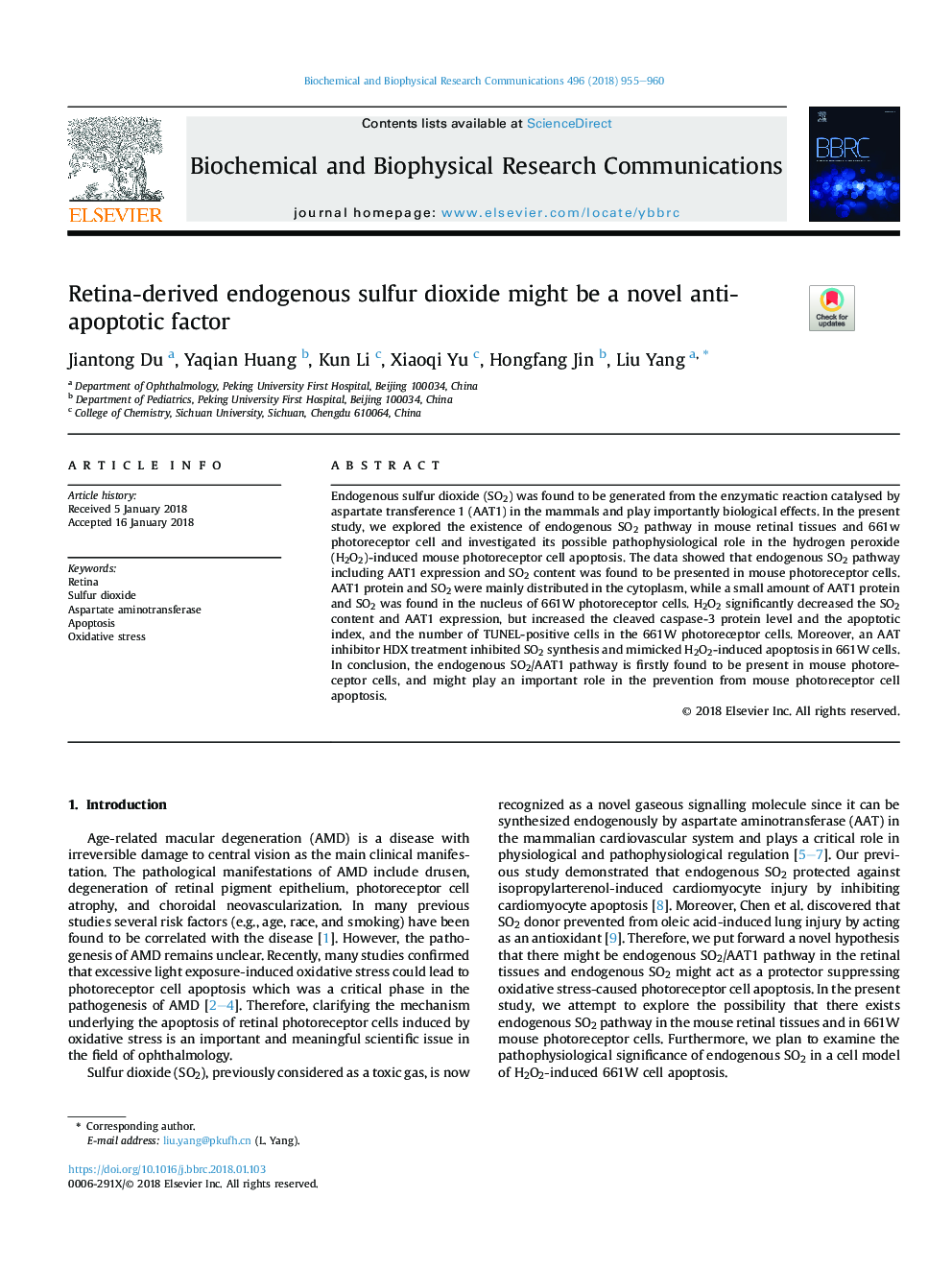| Article ID | Journal | Published Year | Pages | File Type |
|---|---|---|---|---|
| 8294577 | Biochemical and Biophysical Research Communications | 2018 | 6 Pages |
Abstract
Endogenous sulfur dioxide (SO2) was found to be generated from the enzymatic reaction catalysed by aspartate transference 1 (AAT1) in the mammals and play importantly biological effects. In the present study, we explored the existence of endogenous SO2 pathway in mouse retinal tissues and 661w photoreceptor cell and investigated its possible pathophysiological role in the hydrogen peroxide (H2O2)-induced mouse photoreceptor cell apoptosis. The data showed that endogenous SO2 pathway including AAT1 expression and SO2 content was found to be presented in mouse photoreceptor cells. AAT1 protein and SO2 were mainly distributed in the cytoplasm, while a small amount of AAT1 protein and SO2 was found in the nucleus of 661W photoreceptor cells. H2O2 significantly decreased the SO2 content and AAT1 expression, but increased the cleaved caspase-3 protein level and the apoptotic index, and the number of TUNEL-positive cells in the 661W photoreceptor cells. Moreover, an AAT inhibitor HDX treatment inhibited SO2 synthesis and mimicked H2O2-induced apoptosis in 661W cells. In conclusion, the endogenous SO2/AAT1 pathway is firstly found to be present in mouse photoreceptor cells, and might play an important role in the prevention from mouse photoreceptor cell apoptosis.
Related Topics
Life Sciences
Biochemistry, Genetics and Molecular Biology
Biochemistry
Authors
Jiantong Du, Yaqian Huang, Kun Li, Xiaoqi Yu, Hongfang Jin, Liu Yang,
